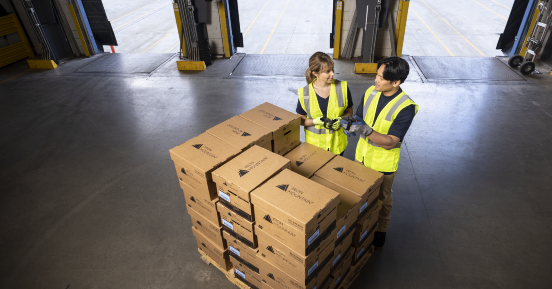Elevate the power of your work
Get a FREE consultation today!
Businesses are quickly finding alternate ways to manage their supply chain and logistics networks, and many are opting for agile solutions.

The supply chain and logistics space is evolving in response to persistent disruption and changing consumer demands. You may find yourself in an environment where the old way of storing, transporting, and distributing goods does not work the way it once did. The methods of the past are simply not reliable, sustainable, efficient, or cost-effective in today’s landscape.
Businesses are quickly finding alternate ways to manage their supply chain and logistics networks, and many are opting for agile solutions.
Douglas Kent, EVP of Strategy and Alliances for Association for Supply Chain Management (ASCM) as quoted in Supply Chain Management Review, June 13, 2013
While warehouse space shortages have subsided from record levels in 2022, distribution and fulfillment costs in the US continue to rise. In a 2023, CNBC Supply Chain Survey, 60% of respondents indicated that warehouse costs increased 10%+ from 2022. Labor also remains an ongoing challenge in the logistics space, with the KPMG Supply Chain Stability Index showing that the logistics and distribution talent market remains both tight and volatile.
Additionally, all major carriers including DHL, UPS, and FedEx have already announced significant price increases of between 6.9% to 7.9% for 2023. These increases, no doubt, indicate the direction for overall market levels.
The above challenges are resulting in a shift among logistics leaders and organizations looking for solutions and partners to bring agility, diversification, and locality to their supply chain. Here are three emerging trends to watch for in the coming months.
Disruptions of the past few years have led to many organizations facing periods where they had either too much inventory or not enough to meet customer demand. Inventory management has become increasingly challenging as pre-pandemic consistency and predictability have been replaced by volatility and dynamic end-user preferences and buying habits. As inventory planning strategies evolve, end-to-end visibility of materials will become increasingly important.
Today’s leading third party logistics companies (3PL) offer this end-to-end visibility for your logistics operations through the use of advanced warehouse management systems (WMS) with direct integration capabilities. As a client, you have direct access to real-time quantity and location information, allowing you to leverage this data for intelligent forecasting and positioning and to make informed and timely operational decisions. Some organizations are also pairing this real-time data with artificial intelligence and machine learning to analyze the data and guide purchasing, routing, and other decisions. Using this end-to-end intelligence to better understand your operations is an important component in the effort to match supply with demand.
Traditional logistics models, built around stability and predictability, have generally struggled to adapt to the volatility that continues to plague global supply chains. From transportation delays to demand shifts, a fixed network of facilities in select locations can make it difficult to quickly adjust your strategy when challenges arise, or new markets become a priority.
Diversifying and localizing your distribution and fulfillment network can help you strategically position inventory to overcome disruptions, enter new markets, reduce shipping costs, and increase delivery speed. And partnering with 3PLs with a presence in major markets like Southern California, Dallas, Chicago, Atlanta, and New Jersey can ensure flexibility and agility, wherever needs arise.
Long-term contracts and fixed locations are no longer viable as organizations struggle with changing consumer confidence and other uncertainties. New logistics strategies are necessary to adapt to the constantly changing supply chain environment, and on-demand solutions are helping to address these needs. Ready-when-you-are warehousing and fulfillment solutions enable businesses to bring space and resources online when they need them and discontinue them they are no longer required. This on-demand scalability gives organizations of all sizes tremendous flexibility to pair logistics resources and locations with seasonality, growth, or dynamic demand periods.
The industry is coining a new form of agile warehousing and fulfillment solutions — warehousing as a service (WaaS) — as they treat inventory storage and fulfillment as scalable, ondemand offerings. Much like the pervasive “software as a service” model, WaaS can be turned on and off quickly, easily, and more cost-effectively than traditional in-house or 3PL solutions.
The WaaS model offers productbased businesses a viable solution to help overcome the continuing supply chain disruption challenges that most companies are facing.
As SupplyChainBrain magazine says, “Agility, flexibility, and consistency will be key themes in the coming years,” and the WaaS model aims to provide these advantages and more.
Learn more about Iron Mountain's on-demand third-party logistics solutions here.
Get a FREE consultation today!
